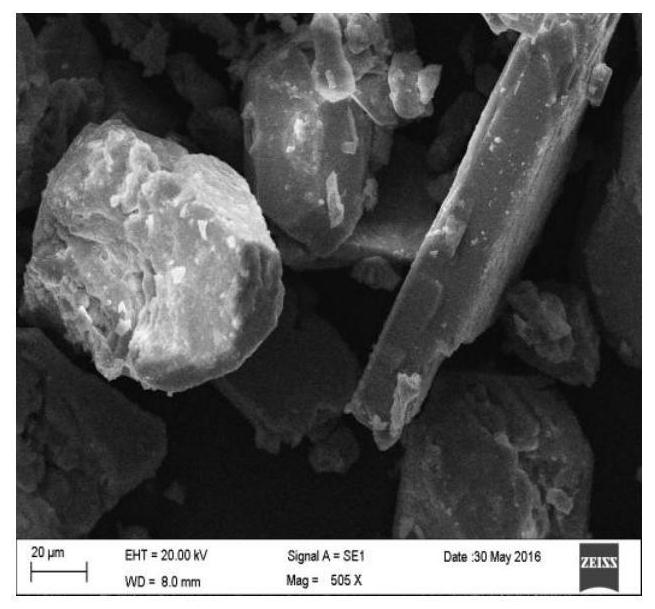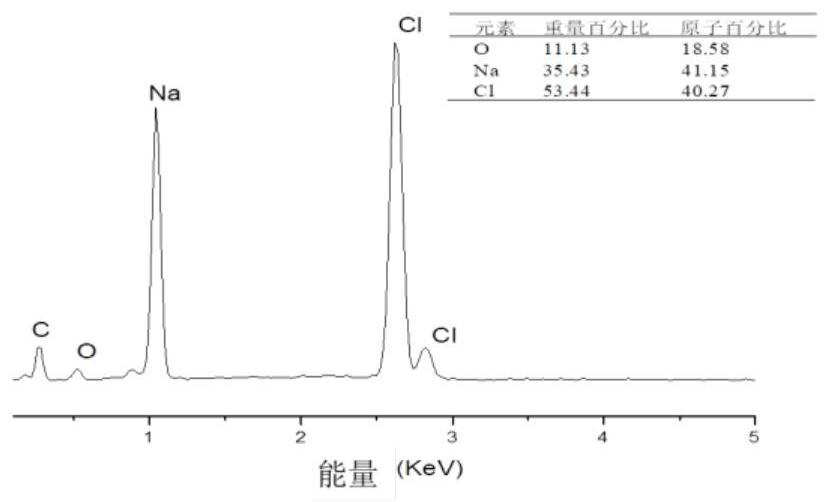A kind of treatment method of hexaphenoxycyclotriphosphazene industrial waste water
A technology of hexaphenoxycyclotriphosphazene and industrial wastewater, which is applied in chemical instruments and methods, preparation of organic compounds, organic chemistry, etc., can solve the problem of high treatment cost, achieve COD value reduction, significant economic benefits and environmental protection benefit effect
- Summary
- Abstract
- Description
- Claims
- Application Information
AI Technical Summary
Problems solved by technology
Method used
Image
Examples
Embodiment 1
[0028] Such as figure 1 Shown, the treatment method of hexaphenoxy cyclotriphosphazene industrial waste water of the present invention comprises the following steps:
[0029] (1) Weigh 300g of waste water and place it in a flask, transfer it to a vacuum evaporation device for evaporation and crystallization, the vacuum degree is -90KPa, and the initial heating temperature is 65°C. When the condensed water outlet speed slows down and the boiling weakens, gradually heat up to 90°C, stop heating when the waste water evaporates 80% to 90% of its total water volume, and take out the solid-liquid mixture after cooling, about 110g;
[0030] (2) add 150mL ethanol in above-mentioned solid-liquid mixture, dissolve sodium phenate, suction filtration, and wash with 50mL ethanol, obtain sodium-chlor white crystal after drying, quality is 61.4g, the SEM photograph of described sodium-chlor and energy Spectral analysis results such as figure 2 and 3 shown;
[0031] (3) The above-mention...
Embodiment 2
[0034] (1) Weigh 300g of waste water and place it in a flask, transfer it to a vacuum evaporation device for evaporation and crystallization, the vacuum degree is -80KPa, and the initial heating temperature is 65°C. When the condensed water outlet speed slows down and the boiling weakens, gradually heat up to 90°C, stop heating when the waste water evaporates 80% to 90% of its total water volume, and take out the solid-liquid mixture after cooling, about 110g;
[0035] (2) Add 150 mL of methanol to the above solid-liquid mixture, dissolve sodium phenate, filter with suction, wash with 50 mL of methanol, and obtain white crystals of sodium chloride after drying, with a quality of 60.2 g and a purity of 98%;
[0036] (3) Transfer the above-mentioned filtrate containing sodium phenate to a vacuum evaporator for evaporation and concentration. The vacuum degree is -80~-90Kpa, and the initial heating temperature is 35°C. Raise the temperature of the water bath to 90°C, and when the ...
Embodiment 3
[0039] Adopt the same steps as steps (1) to (3) in Example 1 to prepare the sodium phenate crude product, adopt ultraviolet spectrophotometry to record the mass fraction of sodium phenate in the described sodium phenate crude product at a wavelength of 290nm to be 55%, get 30g For crude sodium phenoxide, add 9 mL of deionized water, heat to 70°C to dissolve, and when the room temperature is cooled to 30-35°C, add sodium phenoxide trihydrate seed crystals, crystals begin to precipitate, and after 30 minutes, transfer to a refrigerator for crystallization at -5°C After 12 hours, a prismatic white sodium phenate crystal was obtained, which was analyzed and detected by ultraviolet spectroscopy, and the crystal composition was sodium phenate trihydrate, with a mass of 16.3 g and a purity of 97%.
PUM
| Property | Measurement | Unit |
|---|---|---|
| quality score | aaaaa | aaaaa |
Abstract
Description
Claims
Application Information
 Login to View More
Login to View More - R&D
- Intellectual Property
- Life Sciences
- Materials
- Tech Scout
- Unparalleled Data Quality
- Higher Quality Content
- 60% Fewer Hallucinations
Browse by: Latest US Patents, China's latest patents, Technical Efficacy Thesaurus, Application Domain, Technology Topic, Popular Technical Reports.
© 2025 PatSnap. All rights reserved.Legal|Privacy policy|Modern Slavery Act Transparency Statement|Sitemap|About US| Contact US: help@patsnap.com



